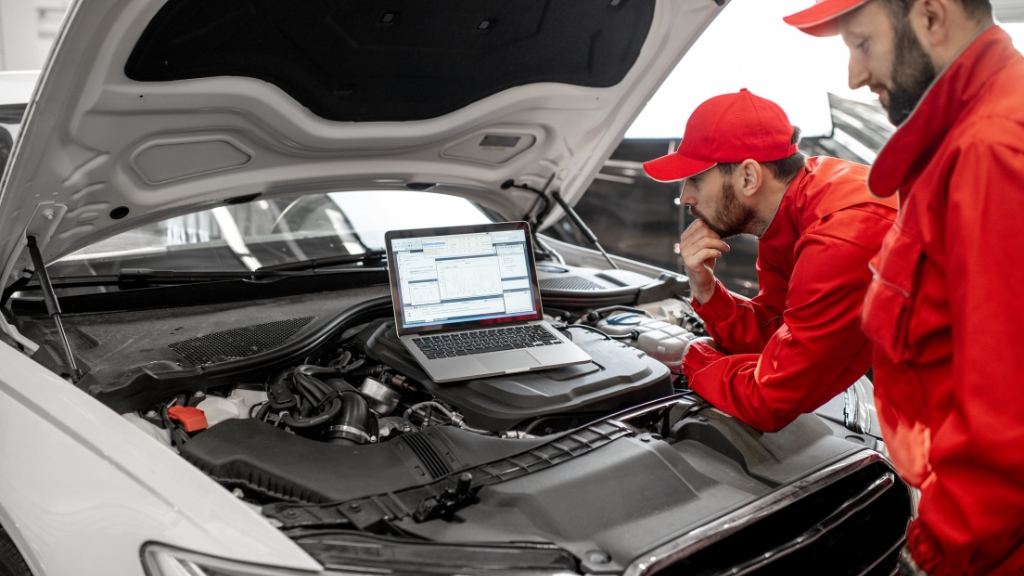AI is transforming industries, and the automotive world is no exception. With vehicles becoming more advanced, traditional diagnostic methods struggle to keep up. That’s where AI steps in, revolutionizing how we identify and address vehicle issues with precision and speed.
I’ve always been fascinated by how technology simplifies complex problems, and AI in automotive diagnostics is a perfect example. It’s not just about fixing cars faster—it’s about predicting problems before they happen, reducing downtime, and enhancing safety. This shift isn’t just futuristic; it’s happening now, reshaping how we think about car maintenance.
In this rapidly evolving landscape, understanding AI’s role in next-gen diagnostics is key. From machine learning algorithms to real-time data analysis, these advancements are paving the way for smarter, more efficient vehicles. Let’s dive into how AI is driving this change and what it means for the future of automotive care.
Understanding Next-Gen Automotive Diagnostics
Next-gen automotive diagnostics leverages advanced technologies to identify and address vehicle issues faster and more accurately. Unlike traditional systems, these rely on AI algorithms and vast data sets to analyze vehicle performance in real time.
Automated fault detection uses machine learning to pinpoint abnormalities in vehicle systems, such as engine misfires or sensor errors. For example, machine learning models study historical patterns to predict failures before they occur, reducing repair costs and avoiding breakdowns.
Sensor integration enhances diagnostics by collecting data from components like brakes, tires, and transmission systems. These sensors monitor critical metrics, ensuring early detection of potential problems like overheat risks or abnormal vibrations.
Real-time data processing simplifies the analysis of vast information streams from connected vehicles. By processing this data instantly, diagnostics tools deliver actionable recommendations to technicians, improving decision-making speed and accuracy.
Cloud-based platforms store diagnostics data, enabling easier access and analysis across service networks. This ensures continuity, allowing technicians to view a vehicle’s health history and make comparisons for better diagnostics outcomes.
Dynamic updates ensure that diagnostic systems evolve alongside vehicle technology. Continuous learning through AI enables these systems to adapt to changes, whether from new vehicle models or updated software configurations.
The Emergence Of AI In Automotive Diagnostics
Advancements in AI are transforming automotive diagnostics, enabling faster, more accurate identification of vehicle issues. By integrating machine learning and real-time data processing, next-gen diagnostics are setting new standards in the automotive industry.
Key Technological Advancements
AI-driven systems now utilize machine learning algorithms to analyze complex data patterns from vehicles. For example, predictive analytics forecasts component failures by studying historical and real-time data trends. Neural networks enhance fault detection by identifying subtle anomalies that traditional methods miss.
Sensor technologies integrate seamlessly with AI platforms, collecting detailed insights from engine performance metrics, braking systems, and more. These sensors provide continuous feedback, forming the foundation for real-time diagnostics.
Cloud-computing platforms streamline data storage and sharing across technical service networks. This ensures diagnostic updates stay synchronized with evolving vehicle technologies, improving system adaptability.
Benefits Brought By AI
AI increases diagnostic accuracy by pinpointing issues with minimal human error. Machine learning identifies patterns that reduce misdiagnosis, speeding up the repair process and minimizing downtime.
Predictive maintenance lowers overall repair costs by addressing potential issues before they worsen. For instance, machine learning models predict when parts, such as brake pads or alternators, approach end-of-life, preventing costly system failures.
Enhanced safety emerges as a critical advantage. Real-time alerts from integrated sensors notify drivers or technicians of imminent problems, such as temperature fluctuations or declining tire pressure, improving preventive care.
Applications Of AI In Automotive Diagnostics
AI is transforming how automotive diagnostics are conducted by improving prediction, detection, and monitoring capabilities. These applications enhance efficiency, accuracy, and safety in vehicle maintenance.
Predictive Maintenance
AI-powered systems anticipate vehicle issues before they happen by analyzing historical and real-time data. Predictive models assess various factors like temperature, pressure, and mileage to estimate component wear and failure risks. For example, machine learning algorithms predict the remaining lifespan of a brake pad, preventing unexpected breakdowns while scheduling maintenance efficiently.
Fault Detection And Troubleshooting
AI detects specific faults by identifying patterns in vast datasets that manual methods often overlook. Advanced diagnostic algorithms analyze error codes and sensor data to locate problems quickly. For instance, an AI-based tool can accurately diagnose transmission issues by recognizing deviations in torque or shift timing, reducing diagnostic time and repair costs.
Real-Time Monitoring Systems
Integrated AI systems enable continuous monitoring of critical vehicle components, ensuring prompt responses to malfunctions. Data from numerous sensors, such as those tracking engine performance or tire pressure, feed into AI frameworks for instant analysis. In practice, this setup allows real-time alerts for issues like coolant leaks or engine misfires, safeguarding vehicles against severe damage.
Challenges And Limitations Of AI Integration
Integrating AI into next-gen automotive diagnostics introduces several challenges that impact its efficiency and adoption. Addressing these limitations is crucial for realizing AI’s full potential in this domain.
Data Privacy Concerns
AI systems in diagnostics rely on vast amounts of vehicle and user data, which raises significant privacy issues. Personal data generated through connected cars, such as location histories, driving habits, and maintenance records, requires secure handling to prevent unauthorized access. Compliance with data protection regulations like GDPR and ensuring robust encryption measures are essential to safeguarding user information. A breach could compromise both trust and industry reputation.
High Implementation Costs
Developing and deploying AI technology in diagnostic systems involves significant financial investment. Costs include advanced hardware, software development, and integration with existing vehicle systems. Smaller automotive businesses and independent repair shops face barriers due to these expenses, limiting widespread adoption. Without scalable solutions, the cost-to-benefit ratio may remain unfavorable for certain stakeholders in the industry.
Skill Gaps In The Workforce
AI integration demands a workforce skilled in programming, machine learning, and data analytics. The automotive sector faces challenges in training or hiring professionals with these technical skills. Traditional mechanics may struggle to adapt to this technologically driven landscape, creating a knowledge gap. Investing in upskilling programs and partnerships with educational institutions could bridge this divide, ensuring a smoother transition.
The Future Of AI In Automotive Diagnostics
AI is set to redefine the landscape of automotive diagnostics. As it evolves, the technology promises innovations that could transform vehicle maintenance and repair processes permanently.
Potential Innovations
AI developments will introduce deeper integration between vehicles and diagnostic systems. Self-learning algorithms could enable adaptive diagnostics, where systems dynamically update themselves based on new vehicle data. For example, AI could detect and respond to emerging patterns tied to specific vehicle models, streamlining future diagnostics.
Enhanced AR (Augmented Reality) tools may also revolutionize repair processes. Repair technicians might use AI-powered AR glasses to visualize vehicle components and receive real-time guidance, reducing repair time and errors. Autonomous diagnostics systems could further minimize human intervention by running complete health analyses and scheduling predictive maintenance autonomously.
Energy-efficient diagnostics systems might emerge, particularly for electric and hybrid vehicles. AI could optimize battery performance by analyzing degradation patterns, ensuring longer-lasting energy systems and timely replacements.
Long-Term Industry Impact
AI will likely reshape global automotive repair networks. We’ll see increased standardization as AI-enabled platforms unify diagnostics practices, allowing auto repair shops worldwide to follow consistent benchmarks. This could reduce discrepancies in service quality within large industry chains.
Connected diagnostics systems will seamlessly share data between manufacturers and dealerships, improving recall processes and vehicle design. Insights gathered during diagnostics might directly influence manufacturing adjustments, enhancing product reliability over time.
The skill demand in the industry will shift. Routine diagnostic tasks could become automated, pushing technicians to specialize in AI-related fields. The emphasis could shift toward programming, machine learning, and cyber-physical integration to support these advanced systems.
Cost efficiencies, reliability enhancements, and safer vehicle operations are long-term outcomes expected to emerge from this transformation.
Conclusion
AI is undeniably transforming the landscape of automotive diagnostics, pushing the boundaries of what’s possible in vehicle care. Its ability to predict issues, enhance accuracy, and streamline repairs is setting new standards for efficiency and safety in the industry.
While challenges like data privacy, high costs, and skill gaps remain, the potential benefits far outweigh these hurdles. As AI continues to evolve, it’s clear that its integration into automotive diagnostics will drive innovation, improve reliability, and redefine how we maintain and repair vehicles.
The future of automotive care is smarter, faster, and more connected than ever, and I’m excited to see how AI will continue to shape this next-generation approach to diagnostics.



